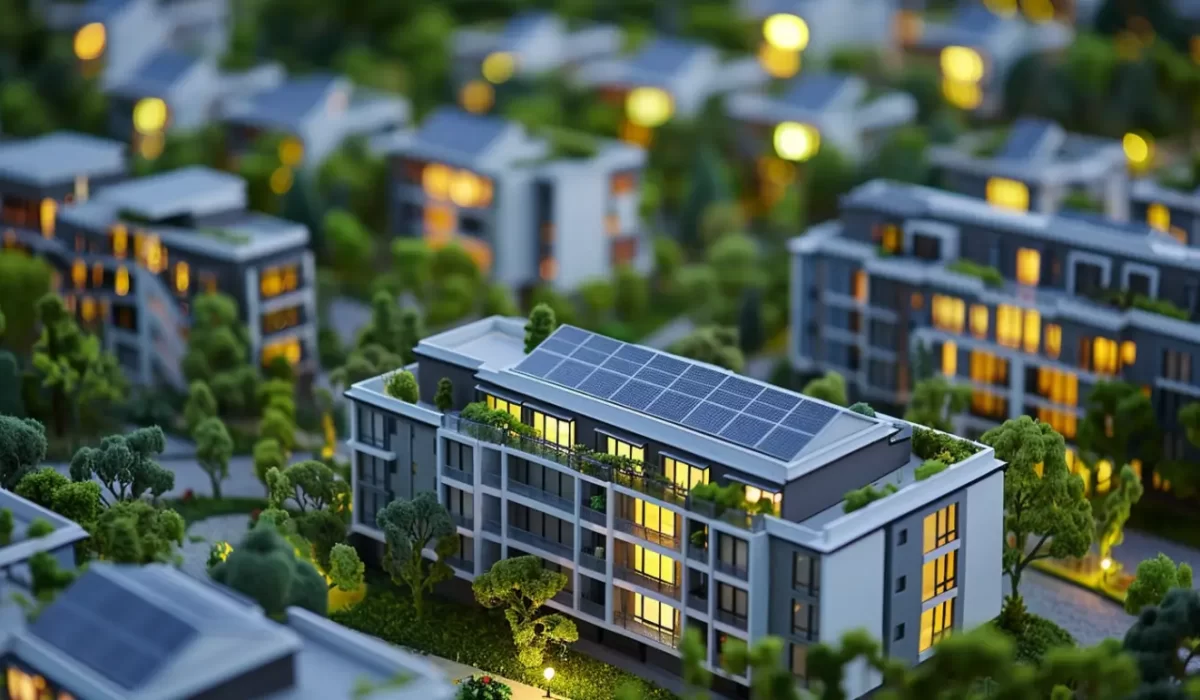Energy efficiency is crucial for roofing in association buildings. It reduces energy costs and enhances occupant comfort while promoting sustainability. By selecting materials and designs that minimize heat absorption and increase reflectivity, property managers can significantly lower heating and cooling expenses. Companies like Fontaine Roofing in Anaheim, CA, specialize in providing energy-efficient roofing solutions that lead to reduced power consumption, lower utility bills, and mitigate the urban heat island effect. These measures benefit the environment and ensure compliance with building codes, contributing to the long-term durability of the building system.
Understanding Energy Efficiency in Association Roofing
In association roofing, energy efficiency is crucial for cost savings and comfort. Choosing materials with high solar reflectance and low heat absorption reduces cooling energy use and mitigates the urban heat island effect. Effective roof design enhances insulation and utilizes thermal mass, stabilizing indoor temperatures. Energy-efficient roofing lowers energy bills, supports sustainable living, and provides lasting environmental benefits to the community.
Contact Us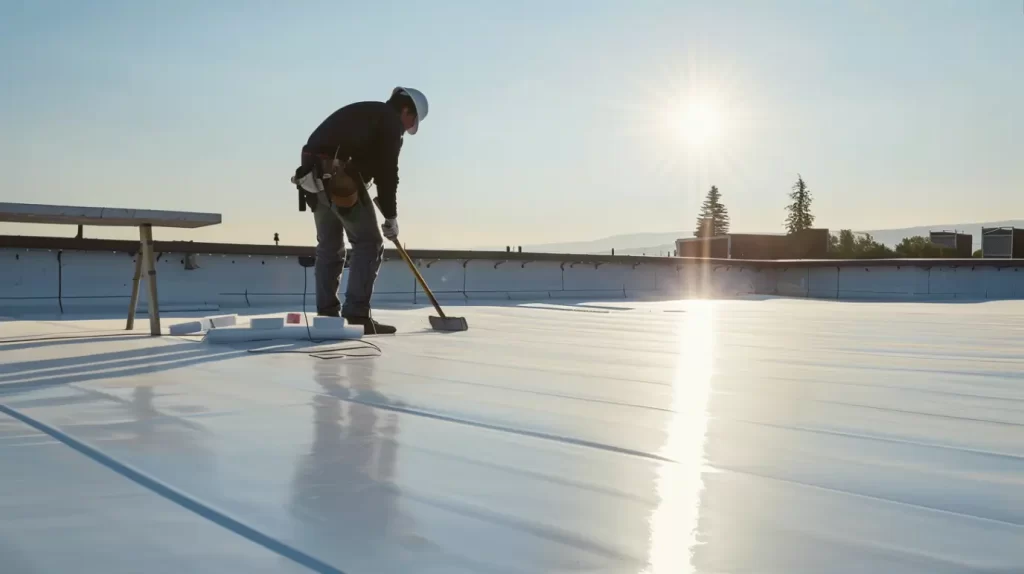
Energy Efficiency in HOA Roofing
Energy efficiency allows HOAs and property managers to save money. Choosing energy-efficient roofing reduces utility bills and long-term maintenance costs. Cool roofs reflect UV rays, enhancing indoor comfort for residents. This choice can also increase property value, demonstrating a commitment to sustainability and smart management.
Key Performance Indicators
When choosing efficient roofing materials, consider reflectivity, Solar Reflectance Index (SRI), and insulation. High reflectivity reduces heat absorption, lowering cooling costs and keeping interiors cooler in the sun. A high SRI indicates a roof’s effectiveness at reflecting solar energy.
Good insulation minimizes heat loss in colder months, maintaining indoor comfort year-round. Using roofing materials with optimal insulation and solar reflectance can save energy, reduce utility bills, and enhance comfort for occupants.
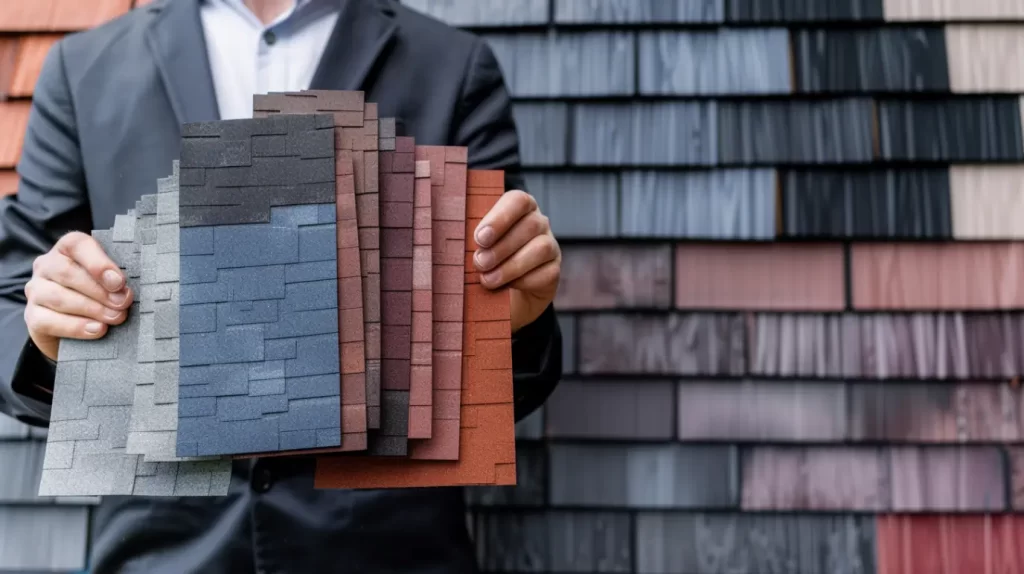
Key Considerations for Energy-Efficient Roofing Materials
When choosing energy-efficient roofing materials, several factors are crucial. Climate plays a significant role; in sunny areas, opt for materials with high solar reflectance to reduce heat absorption and cooling costs.
The roof’s shape and style are also important. Select roofing that complements your building’s design to maximize thermal emittance and provide adequate support for insulation.
By considering these factors, you enhance energy efficiency and extend your roof’s lifespan, resulting in lower maintenance costs for your buildings over time.
How Climate and Location Affect Roofing Choices
Climate significantly influences roofing choices for association buildings. In rainy or humid areas, proper ventilation and moisture-resistant materials are essential to prevent water damage and maintain energy efficiency. In sunny regions, roofs with high solar reflectance reduce heat absorption, lowering cooling costs.
For locations with heavy snow and strong winds, durable roofing materials are crucial for strength and heat retention, helping to keep winter heating costs down.
Understanding these climate factors enables property managers and homeowners to select quality materials, ensuring roofs withstand the elements and maintain building integrity over time.
Designing Roofs for Multi-Unit Buildings
Ensuring energy efficiency in multi-unit buildings requires careful consideration of roof structure and design. Key factors include roof pitch, roofing materials, and ventilation, all of which reduce heat absorption and improve air circulation.
A well-constructed roof can lower energy consumption and enhance indoor comfort for residents. Incorporating reflective materials or opting for a cool roof system can mitigate solar heat gain and address the urban heat island effect common in large cities. These measures can reduce energy costs while promoting sustainability for property managers and homeowners’ associations.
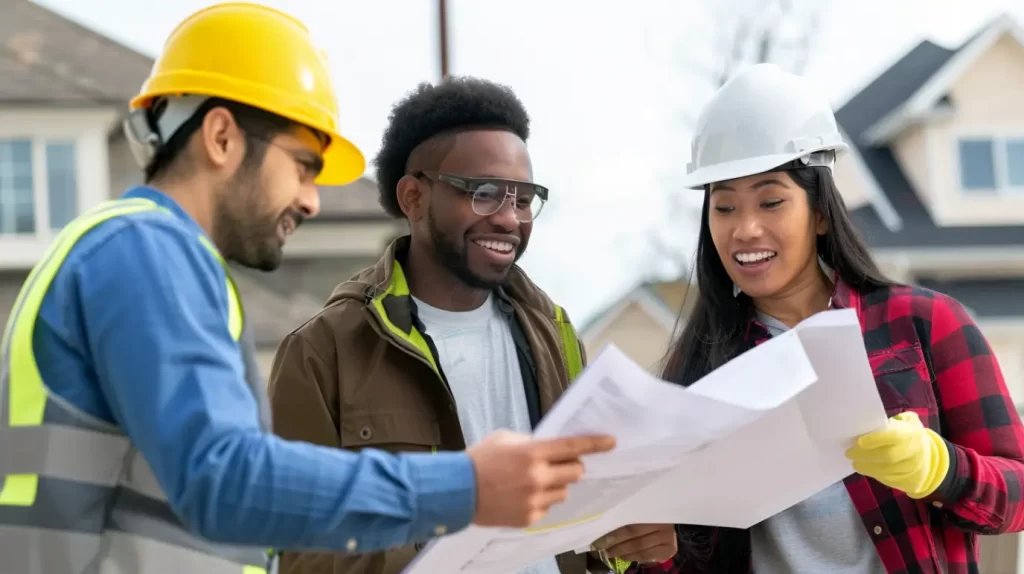
Best Energy-Saving Roof Choices for HOA Properties
To improve energy efficiency in association buildings, several options can significantly enhance indoor comfort and lower utility bills. Metal roofing stands out for its high solar reflectance and durability, effectively reducing heat absorption in hot climates. Cool roof coatings can further boost traditional materials like asphalt shingles by adding reflective properties.
Solar shingles promote sustainability and reduce energy costs through renewable energy generation. Tile roofs offer fire resistance and aesthetic appeal, especially when paired with reflective coatings for enhanced efficiency. These options meet various building codes and design preferences while addressing maintenance needs.
Cool Roof Systems and Energy Savings
A cool roof reduces energy consumption by reflecting more sunlight and absorbing less heat than traditional materials, keeping indoor temperatures lower. This decreases reliance on air conditioning, lowering energy costs.
Additionally, cool roofs combat the urban heat island effect, making outdoor air more comfortable in densely populated areas. Property managers benefit from energy savings while choosing an environmentally friendly roofing option.
Metal Roofing for Strength and Heat Reflection
Metal roofing is one of the strongest options available for association buildings, capable of withstanding high winds and severe weather conditions with ease. Its reflective properties significantly reduce heat absorption, which in turn lowers indoor temperatures and energy consumption. This results in substantial cooling cost savings, making it especially beneficial in hot climates.
Additionally, metal roofs enhance overall energy efficiency, leading to lower utility bills while maintaining an attractive and modern appearance for multi-unit buildings. They are an excellent and smart choice for those seeking reduced energy use, substantial savings, and long-lasting durability.
Green Roofs for Urban Associations
Green roofs are increasingly popular in cities, offering aesthetic appeal and significant environmental benefits. Composed of soil and plants, they absorb rainwater and improve air quality while reducing heat absorption from the sun. This combats the urban heat island effect, leading to lower energy consumption and cooling costs.
With effective design and quality materials, green roofs enhance indoor comfort, support local wildlife, and extend roof durability.
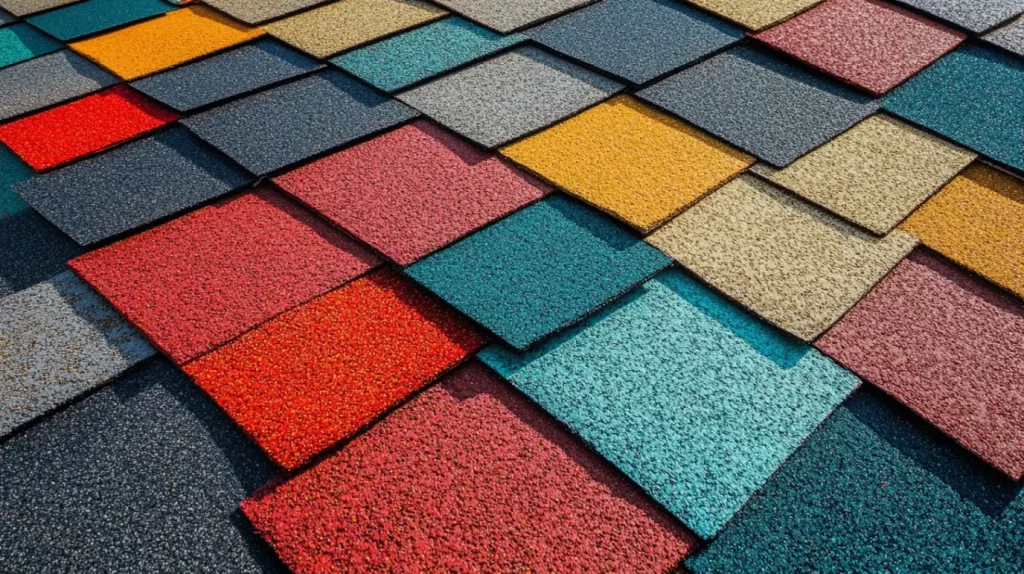
Specialty and Advanced Roofing Materials
Choosing specialty roofing materials enhances a building’s energy efficiency. Solar-integrated options, like shingles or panels, harness renewable energy, improving indoor comfort and lowering costs.
These quality materials not only enhance aesthetics but also promote durability and reduce utility bills. They support energy efficiency, minimize heat absorption, and improve thermal emittance, delivering better results for modern multi-unit buildings.
Solar-Integrated Roofing Solutions for Associations
Solar-integrated roofing solutions enhance energy efficiency for associations. By incorporating solar panels into the roof design, energy consumption decreases, leading to lower costs. These roofs offer high solar reflectance and thermal emittance, reducing HVAC reliance and improving indoor comfort.
Additionally, solar technology promotes sustainable living, providing environmental benefits and long-term savings. Property owners also enjoy increased property values.

Maintenance Practices to Maximize Energy Efficiency
Regular inspections are crucial for energy-efficient roofing. As a GAF Master Elite Contractor and CertainTeed Shingle Master, we recommend periodic checks for water damage and wear. Thorough cleaning boosts solar reflectance, reduces heat buildup, and lowers cooling costs. As a Polyglass Preferred Contractor, we ensure prompt repairs to extend roof lifespan and enhance energy efficiency, reducing utility bills and improving comfort. High solar reflectance coatings further support these benefits. Proudly certified as an IB Roofing Systems Authorized Applicator and TRI-certified company, we are members of CACM, CAI, and NRCA, underscoring our commitment to quality roofing solutions.
Routine Inspections and Cleaning Protocols
Regular inspections and cleaning are crucial for maintaining energy efficiency in roofing systems. Early detection of wear or damage prevents increased energy consumption. Cleaning surfaces, especially reflective ones, preserves solar reflectance and prevents heat buildup from debris. By adopting these practices, you enhance your roof’s performance, extend its lifespan, and reduce energy costs, contributing to both personal savings and community sustainability goals.
Timely Repairs, Upkeep, and Longevity
Regular maintenance and prompt repairs are crucial for extending your building’s roof lifespan. Addressing issues like water damage and excessive heat quickly preserves the roof’s integrity and enhances energy efficiency. Materials such as metal roofing and cool roofs excel in this regard, but they require consistent upkeep to perform optimally. A scheduled maintenance routine ensures the roof remains in good condition, helping property managers reduce energy costs, maintain indoor comfort, and protect their investment over time.
Your Next Steps
Choosing energy-efficient roofing benefits the planet and reduces energy bills for building owners. Options like cool, metal, and solar roofs enhance indoor comfort by keeping buildings cooler. Companies like Fontaine Roofing in Anaheim, CA, provide quality materials and smart designs that ensure year-round comfort. Adhering to building codes and maintaining roofs prolongs these benefits, lowering energy consumption and costs. This approach demonstrates care for both the environment and occupants. Investing in high-quality materials, such as those offered by Fontaine Roofing, is a wise choice for all building owners’ futures.
Read our blog: How to Manage Roofing Projects Across Multiple Sites
Frequently Asked Questions
Are there incentives or rebates for energy-efficient roofing in association buildings?
Yes, various local, state, and federal programs offer incentives or rebates for energy-efficient roofing in association buildings. These include tax credits, grants, and utility rebates aimed at promoting energy savings and reducing costs for property managers and homeowners.
Can energy-efficient roofing improve property values and occupancy rates?
Energy-efficient roofing can enhance property value and attract more potential buyers. These roofs reduce energy costs and improve comfort, appealing to environmentally conscious individuals. Additionally, aesthetically pleasing roofing enhances the property’s appearance, making it more attractive to buyers.
What are the challenges when retrofitting older association buildings with new energy-efficient roofs?
Updating older association buildings with energy-efficient roofs can be challenging. Existing structures may not support new roofs, and local building codes impose strict regulations. Construction can also disrupt residents with noise and other inconveniences. Careful planning and collaboration are essential to balance modern materials with the building’s historic appearance.

